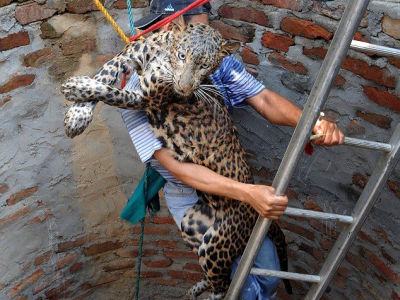It is better for your health to turn the rhino upside down when carrying it.

Conservation activities are underway in Africa to hang wild rhinos protected to increase their populations upside down using helicopters and transport them far from their original habitat. It was thought that carrying a rhino by helicopter upside down would have an adverse effect on the health of the rhino, but it is better for the health of the rhino to be upside down than to carry the rhino using a stretcher. Turned out.
THE PULMONARY AND METABOLIC EFFECTS OF SUSPENSION BY THE FEET COMPARED WITH LATERAL RECUMBENCY IN IMMOBILIZED BLACK RHINOCEROSES (DICEROS BICORNIS) CAPTURED BY AERIAL DARTING | Journal of Wildlife Diseases
https://meridian.allenpress.com/jwd/article-abstract/57/2/357/451340/THE-PULMONARY-AND-METABOLIC-EFFECTS-OF-SUSPENSION
Why airlifting rhinos upside down is critical to conservation --CNN
https://edition.cnn.com/2021/03/17/world/rhino-airlift-upside-down-hnk-spc-intl/index.html
Black rhinos live throughout Africa, with more than 100,000 inhabited in the 1960s. However, the rhino horns are so expensive that they are overfished by poachers, and in the mid-1990s the number of black rhinos dropped to just 2,400. Since then, the black rhino has grown to 5,600 through hard conservation efforts.
Normally, protected rhinos are carried on trucks, but some places do not have roads and cannot be moved by car. Therefore, helicopters may be used to move rhinos to inaccessible locations.
You can see how the black rhino is actually transported by helicopter in the following movie. The World Wildlife Fund (WWF) is working on a project to put the found black rhinos to sleep under anesthesia and move them by helicopter to expand the habitat of the endangered black rhinos.
Black rhinos moved to new home by helicopter | WWF --YouTube
When moving by helicopter, you can either lay it on its side and carry it on a stretcher, or tie a rope to your foot and carry it upside down. Upside down is common for air freight because it is faster, easier, and cheaper to perform than using a stretcher.
However, it was unclear how turning the rhino upside down in the air would affect the health of the rhino. It was also pointed out that 'upside down may have more restricted breathing than lying down, which may adversely affect the health of the rhinoceros.'

Therefore, the Namibian government in southwestern Africa asked a research team at Cornell University's Faculty of Veterinary Medicine to investigate. A team at Cornell University measured respiratory volume and maximal oxygen uptake of 12 black rhinos, lying on a stretcher and upside down.
As a result, it was found that upside down is good for the health of rhinoceros rather than adversely affecting it. According to Robin Radcliffe, a senior lecturer at Cornell University's School of Veterinary Medicine, upside down stretches the rhino's spine and opens the airways, increasing breathing volume. It was also found that when laid sideways, the amount of oxygen supplied to the body decreases with each breath.
The research team estimates that upside-down rhinos reduce the time required for airlift and improve animal health, rather than laying rhinos sideways. When the rhino is transported, it is given an anesthetic that is 1000 times stronger than morphine, and this powerful anesthetic causes hypoxemia, which shortens the air transportation time and puts a burden on the animals. Claims to be less. In addition, since the air transportation cost of rhinoceros is 4,000 dollars (about 430,000 yen) per hour, it seems that the economic cost is lower if the upside-down operation is completed in just a few minutes.

'The Namibian government has the foresight to recognize that rhino airlift will continue to increase and to better understand the safety of rhinos themselves,' said Radcliffe. 'Our research is on the verge of extinction. We hope that it will help strengthen the protection of endangered animals. What we can do as a conservation activist is to provide the best security and the best management for the recovery of rhino populations. ' He says.
In addition, Mr. Radcliffe commented as a future research subject, 'I would like to investigate the effect of air transportation itself on the brain activity and blood flow of rhinoceros.'
Related Posts:







